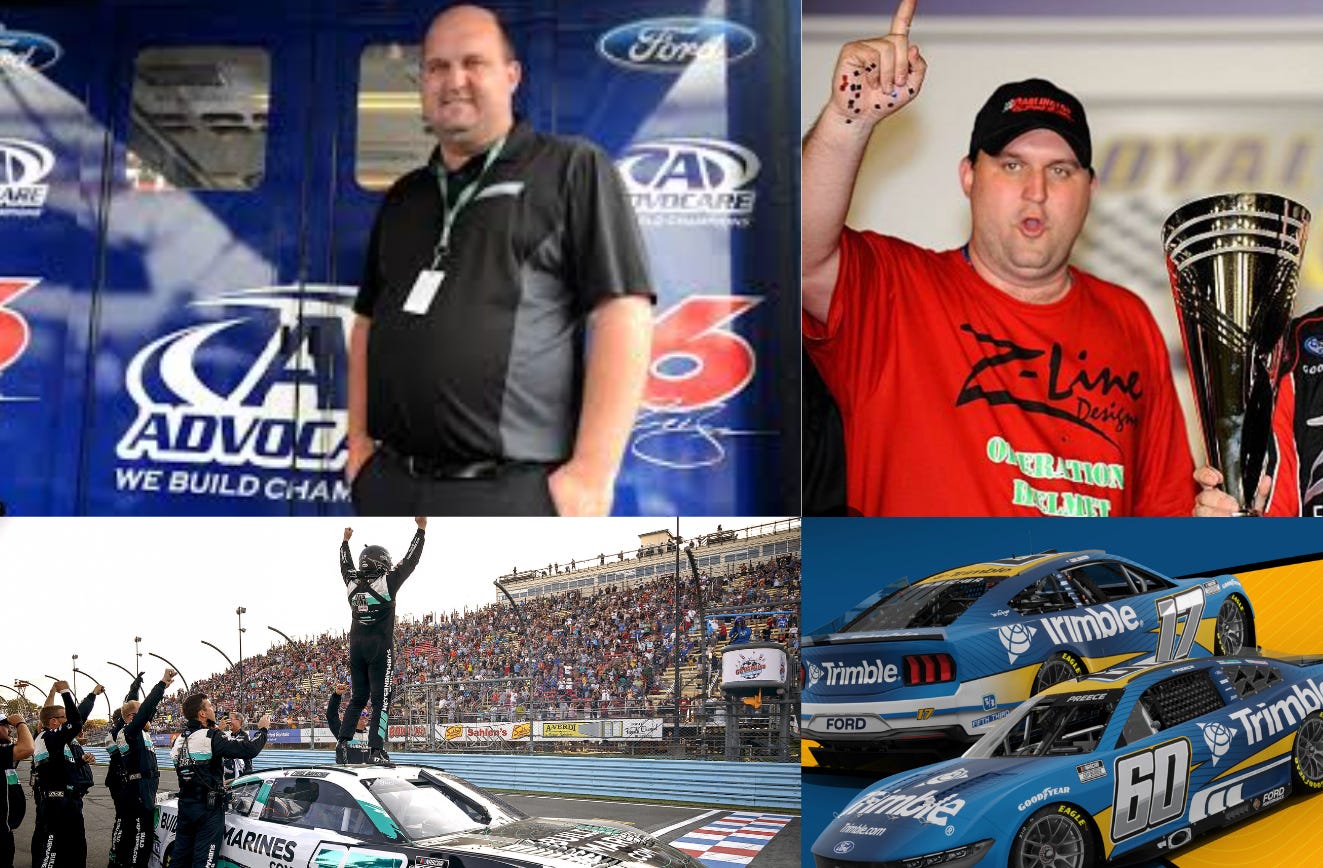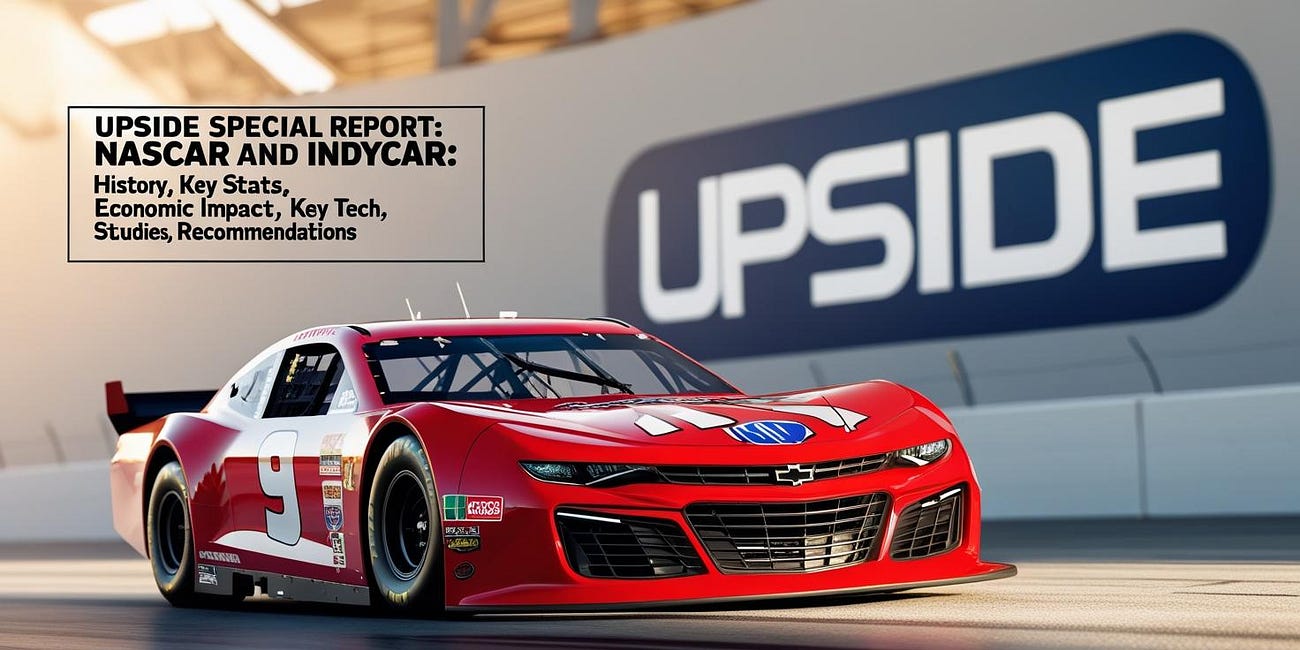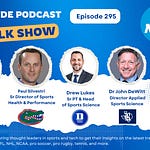Today we have the honor of interviewing Kevin Kidd a top motor sports executive in NASCAR.
Kevin Kidd is a seasoned NASCAR executive with extensive experience in motorsports engineering, data strategy, and team management. Over his career, he has played pivotal roles in helping NASCAR teams leverage advanced analytics and performance insights to gain a competitive edge on and off the track, including his time at RFK Racing where he contributed to advancing performance innovation. Known for his deep technical expertise and forward-thinking approach, Kidd has championed innovation in how data is collected, shared, and applied across teams, recognizing the importance of collaboration while still driving individual team performance. His leadership reflects a balance of technical precision and strategic vision, making him a respected figure in the evolution of NASCAR’s data-driven era.
You can watch the video interview below by clicking on the Youtube link. You can also listen to the audio interview by clicking on the link at the top of the page:
📝Show Notes: During our interview with Kevin Kidd, we asked him about the best practices he has seen in applying data and analytics to drive innovation in NASCAR, both on the track and in team operations; how technology such as sensors, AI, and simulation has impacted driver and car performance; how teams leverage real-time data during races to influence split-second strategy decisions; what lessons from motorsports could be applied to other elite sports like football, basketball, and soccer; and where he sees the biggest opportunities for data and technology to shape the future of performance and safety in racing.
You can read the full transcript of the podcast interview with Kevin located at the top of this blog post.
Here are the quotes from the interview with Kevin:
1. Innovation in Data Use
"When we talk about innovation in NASCAR, the conversation always starts with the problem you’re trying to solve. I’ve told people for years: racing is actually pretty easy if you know exactly what the problem is. But getting to that clarity is the hardest part. Once you define the question, then the data becomes useful. The challenge in our sport isn’t that we don’t have data—if anything, it’s that we have too much. There’s no shortage of information coming at us from sensors, cars, simulations, and operations. The best practice, in my opinion, is making sure the data you’re working with is clean and governed properly. There’s nothing worse than making strategic decisions based on bad or misinterpreted data. So as a leader, one of the things I focused on at RFK Racing was building processes around data governance—publishing clean data, in clean formats, to the right users at the right time. That’s how you unlock innovation—by ensuring the information foundation is trustworthy and focused on the real problems, not just noise."
1. On the Various Groups (Drivers, Pit Crew, Engineers, Mechanics, Fabricators) In NASCAR
On the Main Groups:
"There are three main groups: The drivers, pit crew, and engineers. I would add on a fourth group, which would be the mechanics and the fabricators who actually build the cars”.
On Drivers and Pit Crew:
"Drivers and pit crews are actually pretty similar. The typical athletic human performance-type things are of main interest to them."
"With the drivers, it's a lot about endurance conditioning. A lot of the technology we use is really about understanding their ability to operate over a four or five-hour period in high heat and other extraneous circumstances."
"The pit crews are a little bit different; they're almost like a sprint. Those guys do their job in about eight or nine seconds, so you have to really focus on a completely different thing with them, where a lot of their strength and conditioning focuses on explosive techniques and the ability to make quick cuts and pivots."
"By and large, for drivers and pit crews, it's a lot of human and mental performance. A lot of focus and the ability to make quick decisions are really important for both groups."
On Engineers:
"For our engineers, it's a little bit less athletic and a whole lot more analytic. A lot of the focus is on reducing cognitive load throughout a race weekend and particularly during the race itself."
"Anything we can do from an analytics perspective to reduce the cognitive load and help them make decisions without having to go mine for data or do a whole lot of work—those are wins in their world. Providing them the right data at the right time to be able to make those decisions are all critical things for them."
On Mechanics and Fabricators
"For our mechanics and fabricators, a lot of the data we focus on is really about operational workflow. We make sure they have the right information at the right time to be able to build cars the way the engineers call them out and have best practices on how to build those cars."
2. Technology and Performance
"If I had to pick one area where technology has transformed NASCAR in my career, it would be simulation. Simulation is the absolute lifeblood of motorsports today. We don’t get much practice or testing on track, and even in series that offer more track time, it’s never enough. The reality is there are millions of possible combinations of setup parameters for a car—you could never physically test all of them on the track. That’s where simulation comes in. Over the years, the tools have improved beyond anything I could have imagined when I first started. Today, before a single lap is run on race weekend, we’ve run hundreds of thousands of combinations through simulation to optimize the car’s setup. That gives us a much better starting point, and the precision with which we can hone in on the right balance is better than ever. But I’ll be honest—simulation isn’t bulletproof. There are still areas where the models don’t have enough data to be as predictive as we’d like. Those black boxes are where the next frontier is—if we can fill in those gaps, our simulations will become even more powerful. But even with limitations, the advancements have fundamentally changed how we prepare, how we engineer, and ultimately how drivers perform on race day."
3. Real-Time Decision Making
"Real-time data is where motorsports really distinguishes itself from other sports. NASCAR races are filled with split-second decisions, and the engineer or crew chief has to process an enormous flow of data in real time. The trick is reducing the cognitive load—if an engineer is drowning in raw data, they can’t make the critical calls when it matters most. A good example is fuel strategy. Most fans don’t realize this, but NASCAR vehicles don’t have fuel gauges. Drivers literally don’t know when they’re going to run out of gas—it’s by design, and it’s one of those quirks of the sport that has been there since the beginning. So it’s up to the engineers and strategists, using real-time data, to calculate fuel consumption lap by lap and project how far the car can go. We can get that projection down to almost the exact point on the track where the car will run out. That matters a lot when you’re trying to stretch a fuel window, make it to the end without pitting, or optimize your stop strategy. That kind of precision can win or lose you a race. And that’s just one example—there are dozens more layers of complexity happening simultaneously. The key is building systems and processes so that the data doesn’t overwhelm the team, but instead gives them clarity to make the right decision at the right moment."
4. Cross-Sport Lessons
"One of the things I’ve always appreciated about motorsports is that we’re often ahead of other sports in terms of data use. NASCAR, F1, IndyCar—these series have been ingesting and analyzing massive data streams for years. I’ve been watching the NFL introduce Hawkeye for first down measurements, and it’s gotten a lot of attention. But the truth is, we’ve been using video capture and machine learning to judge position in NASCAR for almost a decade. That’s not to downplay what the NFL is doing—on the contrary, I think it’s a smart, measured approach. And that’s the key lesson for other sports: don’t adopt technology just for the sake of it. Be thoughtful, be calculated, and bring it online where it actually adds value to the competition or the fan experience. Motorsports has taught me that not every shiny new tool will move the needle. You need to focus on the technologies that genuinely make the game safer, fairer, or more competitive. If you do that, you not only improve performance—you also build trust in the technology from athletes, coaches, and fans alike."
5. The Fact that NASCAR Teams are Sharing Data with Other NASCAR Teams during Races
“In NASCAR, what’s really unique is that each team in a race gets data not only about their own cars, but also about every other car in the field. Compared to F1, where you only get your own car’s data, that’s a huge difference. Even though we have fewer channels per car than F1, the fact that we can analyze our competitors’ data gives us a tremendous opportunity to understand our performance relative to theirs, see where they’re vulnerable, and find areas to exploit. That’s one of the things that makes NASCAR really fun—you’re not just optimizing your own car, you’re analyzing the entire field in real time.
6. The Fact that there is a Large Amount of data (12B) similar to F1 collected by Teams during NASCAR Races
Julien Blin:
”I remember reading that in Formula 1 they capture about 12 billion data points per race across all the teams”.
Kevin Kidd:
”In NASCAR, it’s probably similar or even more, but the types of data are very different. Each team only gets a limited number of channels on their own cars—that’s by rule, NASCAR doesn’t allow us to just capture everything. Compared to F1, you’d look at the data coming off one NASCAR car and say it’s not apples to apples. But what makes NASCAR unique is that we don’t just get our own car’s data—we get that limited set across every car in the field. So instead of having deep telemetry from one car like in F1, we’re analyzing the entire grid. That creates incredible opportunities to see where we stack up, find competitor vulnerabilities, and adjust strategy in real time”.
7. Future of Data in Racing
"Looking ahead, the frontier in NASCAR is clearly around AI and machine learning. Engineers and crew chiefs are already maxed out from the moment the green flag drops. Their mental bandwidth gets consumed immediately, and that can leave them without the clarity to make the hardest calls later in the race. If we can use AI to automate some of the simpler decision-making processes reliably, we free up our best people to focus on the complex problems where human judgment still matters. That’s a huge opportunity. On the human performance side, the innovations won’t stop either. We’re experimenting with hydration monitoring, biomechanics, movement analysis—all the things that can make drivers and pit crews stronger, faster, and more consistent. In pit stops, for example, we’re always chasing what we call ‘free speed.’ If you can shave one second off a stop, that can be the difference between winning and losing. Sometimes it takes an entire green-flag stint on track to gain that one second, but if your pit crew can do it instantly through better technique and technology, that’s a massive advantage. The same goes for drivers—if we can better understand their endurance and recovery, we can make sure they’re at their absolute best every time they strap into the car. So the future is about pushing the frontier of both machine intelligence and human performance—and doing it in ways that keep raising the bar for what’s possible in motorsports."
You may also like:
🎙️ Upside Chat with Pieter Bulsink, CEO, Maverick Training, a Leading Sports Performance Company in F1 and Other Sports.
Today we have the honor of interviewing Pieter Bulsink, CEO of Maverick Training, a sports performance company focused on elite athletes in F1 and other sports.
🏁 Upside Special Report: NASCAR and IndyCar: History, Key Stats, Studies, Tech, Recommendations to Startups
As the 2025 seasons of NASCAR and IndyCar come to a close, motorsports fans are once again captivated by the high-speed drama, strategic brilliance, and engineering marvels that make each series unique. Though both are top-tier American motorsports leagues, they operate in largely different ecosystems—with divergent cultures, technologies, and fan bases…














